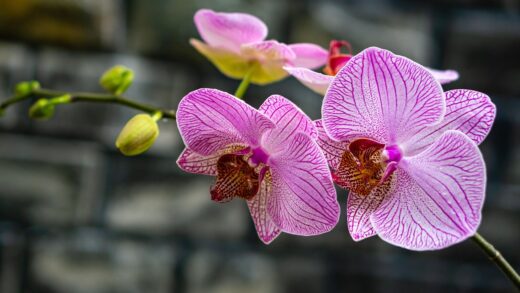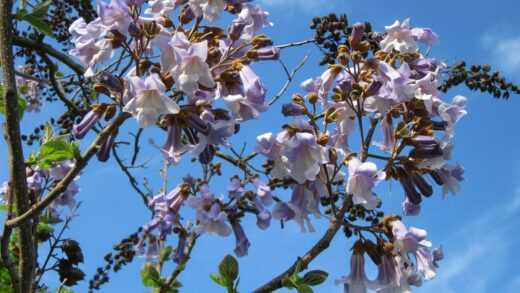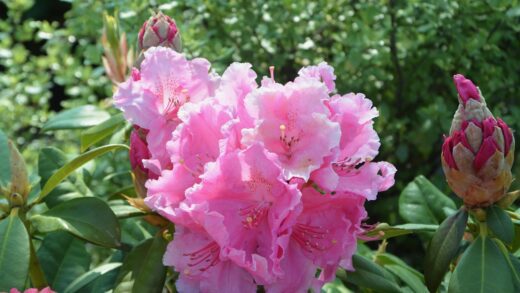To maintain its reputation as a prolific, season-long bloomer, bacopa relies on a consistent and readily available supply of essential nutrients. This plant is classified as a heavy feeder, meaning it has a high metabolic rate and rapidly consumes the nutrients within its growing medium to fuel its vigorous growth and continuous flower production. Simply planting it in good quality soil is not enough; a dedicated fertilization program is crucial to prevent nutrient deficiencies that can lead to stunted growth, yellowing leaves, and a disappointing lack of flowers. Providing the right balance of nutrients at the right time is fundamental to unlocking the plant’s full potential.
The nutrient needs of bacopa are multifaceted, requiring a balanced blend of macronutrients—nitrogen (N), phosphorus (P), and potassium (K)—as well as a range of essential micronutrients. Nitrogen is vital for lush, green foliage growth, which forms the beautiful cascading backdrop for the flowers. Phosphorus plays a key role in root development and, most importantly, in the process of flower and bud formation. Potassium is essential for overall plant health, vigour, and disease resistance. An imbalance in these key nutrients can quickly manifest in visible symptoms on the plant.
Without a regular feeding schedule, a bacopa plant will often perform well in the spring, drawing on the nutrients initially present in the potting soil. However, by mid-summer, these resources become depleted. The plant’s growth may slow, the leaves might turn a pale green or yellow, and flowering can become sparse or stop altogether. This is a common issue that many gardeners face, and it is almost always a direct result of insufficient nutrition. Rejuvenating a starved plant is possible, but preventing the deficiency in the first place through proactive fertilization is a much more effective strategy.
This article will provide a comprehensive overview of the specific nutrient requirements of bacopa and detail the most effective methods for fertilization. We will discuss the differences between various types of fertilizers, explain how to interpret fertilizer labels, and provide clear guidelines on application frequency and techniques. By implementing a sound nutritional program, you can ensure your bacopa has all the resources it needs to produce a breathtaking, non-stop display of blooms from the moment it is planted until the first frosts of autumn.
Understanding macronutrients and micronutrients
The nutritional needs of bacopa, like all plants, are divided into two categories: macronutrients and micronutrients. Macronutrients are those that the plant requires in relatively large quantities. The primary macronutrients are nitrogen (N), phosphorus (P), and potassium (K), which are represented by the three numbers on a fertilizer package (the N-P-K ratio). Nitrogen is the engine of vegetative growth, responsible for producing chlorophyll and creating lush, green stems and leaves. A lack of nitrogen will result in pale green or yellow foliage and weak, stunted growth.
Phosphorus (P) is often referred to as the “bloom booster” because of its critical role in energy transfer, root development, and the formation of flowers, fruits, and seeds. For a flowering plant like bacopa, an adequate supply of phosphorus is absolutely essential for initiating bud set and sustaining a long blooming period. Potassium (K) is the great regulator, contributing to the overall health and hardiness of the plant. It helps to regulate water movement within the plant’s cells and strengthens it against drought stress, temperature extremes, and disease.
While required in much smaller quantities, micronutrients are no less important for the plant’s health. These include elements such as iron, magnesium, calcium, manganese, zinc, and boron. A deficiency in any one of these can cause specific problems. For example, an iron deficiency often manifests as chlorosis, where the leaves turn yellow but the veins remain green. A magnesium deficiency can also cause yellowing, often starting at the edges of the older, lower leaves. Most high-quality, balanced fertilizers will contain a full spectrum of these essential micronutrients to prevent such deficiencies.
For bacopa, a balanced fertilizer where the N-P-K numbers are relatively equal (like 20-20-20 or 10-10-10) is an excellent choice for promoting both healthy foliage and abundant flowers. Alternatively, a fertilizer formulated specifically for flowering annuals, which may have a slightly higher phosphorus number, can also be very effective. The key is to provide a complete nutritional profile that addresses all the plant’s needs, rather than focusing on just one single element, to ensure robust and balanced development.
Choosing the right type of fertilizer
Gardeners have several options when it comes to choosing a fertilizer for bacopa, with the most common choices being liquid (water-soluble) and slow-release granular fertilizers. Liquid fertilizers are mixed with water and applied during regular watering. Their main advantage is that the nutrients are immediately available for the plant’s roots to absorb. This makes them ideal for providing a quick boost to the plant and for establishing the kind of consistent feeding schedule that heavy feeders like bacopa appreciate. This immediate availability also means they need to be applied more frequently, typically every one to three weeks.
Slow-release fertilizers consist of small pellets or prills that are coated with a semi-permeable material. These are typically mixed into the potting soil at the time of planting. Each time the plant is watered, a small amount of nutrients is released from the pellets into the soil. The release rate is often dependent on soil temperature and moisture, and a single application can last for several months. This “set it and forget it” approach is very convenient, providing a steady, low-level supply of nutrients throughout much of the growing season.
A combination of both types of fertilizer often yields the best results for bacopa. Incorporating a slow-release fertilizer into the soil at planting time provides a strong foundation of nutrients to support the initial growth phase. Then, as the plant matures and its flowering peaks in mid-summer, its nutritional demands increase. At this point, supplementing with a liquid fertilizer every two to three weeks can provide the extra energy needed to maintain peak performance and prevent the common mid-season slump. This dual approach ensures the plant is never without the resources it needs.
Organic fertilizer options are also available for those who prefer them. These can include products like liquid fish emulsion, seaweed extracts, or compost tea. While often lower in their N-P-K analysis, organic fertilizers have the added benefit of improving soil structure and supporting beneficial microbial life. They may need to be applied more frequently than synthetic liquid fertilizers, but they are an excellent and sustainable choice for feeding bacopa. Regardless of the type chosen, it is crucial to follow the application instructions on the product label to avoid over-fertilization.
Application techniques and frequency
The frequency of fertilizer application is critical for meeting the high demands of bacopa. If you are using a water-soluble liquid fertilizer, a consistent schedule is key. For most of the growing season, applying a balanced fertilizer every two to three weeks is a good general rule. However, many experienced growers prefer a “weakly, weekly” approach. This involves diluting the fertilizer to one-quarter or one-half of the recommended strength and applying it with every watering, or at least once a week. This method mimics a more natural nutrient supply and prevents the cycle of feast and famine that can occur with less frequent, full-strength applications.
When applying any type of fertilizer, it is imperative that the soil is already moist. Never apply fertilizer, especially liquid fertilizer, to a dry plant. Dry roots are more susceptible to being burned by the fertilizer salts, which can cause significant damage to the plant. A good practice is to water the plant thoroughly with plain water first, wait about 30 minutes, and then apply the fertilizer solution. This ensures the roots are hydrated and ready to absorb the nutrients safely.
For slow-release granular fertilizers, the application is much simpler. At the time of planting, mix the recommended amount of granules, as specified on the product packaging, directly into the potting soil. Distribute them evenly throughout the soil volume to ensure the developing roots will have access to the nutrients wherever they grow. If you are top-dressing an already established plant, sprinkle the granules evenly over the soil surface and gently work them into the top few centimetres of soil with your fingers, then water thoroughly to activate the release of nutrients.
Pay close attention to the plant’s response to your feeding regimen. Healthy, vibrant green foliage and a profusion of flowers are signs that your program is working well. If, however, you notice signs of over-fertilization, such as white, crusty salt build-up on the soil surface, burnt or brown leaf tips, or stunted growth, you should react immediately. The remedy is to flush the soil thoroughly by watering the container with a large volume of plain water, allowing it to drain freely, to leach out the excess fertilizer salts. Then, reduce the frequency or concentration of your future fertilizer applications.
Recognizing signs of nutrient deficiency
Being able to identify the visual signs of nutrient deficiency is a valuable skill for any gardener. The most common deficiency seen in bacopa is a lack of nitrogen. This typically manifests as a general yellowing, or chlorosis, of the leaves, starting with the older, lower leaves first. The overall growth of the plant will also be weak and spindly, and flower production will decrease significantly. If you observe these symptoms, a dose of a balanced liquid fertilizer will often produce a visible improvement within a week.
A phosphorus deficiency, while less common, can also occur, especially if a fertilizer with a very low middle number (P) is used. The signs can be more subtle, often appearing as stunted growth and leaves that may take on a dull, slightly purplish hue. The most prominent symptom, however, will be a dramatic reduction in flowering. The plant may produce plenty of green foliage but will fail to set buds or will produce very few flowers. Switching to a fertilizer specifically formulated for blooming plants can help to correct this issue.
Potassium deficiency often appears as yellowing or browning along the edges or tips of the older leaves. The plant may also seem generally weak and have a lower resistance to stress from heat, drought, or disease. While specific potassium deficiencies are less frequent in container-grown annuals, ensuring your chosen fertilizer is balanced (containing N, P, and K) is the best way to prevent this and other issues.
Deficiencies in micronutrients like iron can also cause problems. An iron deficiency results in a specific type of chlorosis where the leaves turn yellow, but the veins remain dark green, creating a distinctive netted pattern. This is more common in soils with a high pH (alkaline soils), which can make iron unavailable to the plant. If this symptom appears, applying a fertilizer that contains chelated iron can quickly resolve the problem. Regular use of a complete, balanced fertilizer with a full spectrum of micronutrients is the best preventative measure against all of these potential deficiencies.
📷: Deavmi, CC BY-SA 3.0, via Wikimedia Commons




















